PROTECT YOUR DNA WITH QUANTUM TECHNOLOGY
Orgo-Life the new way to the future Advertising by AdpathwayI have been doing research in Bangladesh for almost 25 years, covering many different Earth science topics: tectonics and earthquakes, land subsidence and sea level rise, availability of fresh and salty groundwater, rivers changing positions. For several of these topics, I set up and maintain a network of GNSS (Global Navigation Satellite Systems) stations.
GPS is the U.S. constellation of satellites. Now the Russians, Europeans and Chinese also have satellite networks. While your phone can tell you where you are within a 10-15 foot range, our stations can locate the fixed antennas to around 2 mm horizontally and around 6 mm vertically. That enables me to see the tectonic motions of the earth leading up to earthquakes and the sinking of the land in the world’s largest delta to less than 1 mm/y. I still find that amazing compared to the days before GNSS became routine. I’ve been at sea where the crew had to use sextants to estimate our position to within 10 miles.
 Map of Bangladesh showing the locations of my GNSS sites and regions that I am visiting. The green circles are working systems, the red ones I will be visiting to repair, and the white ones are new ones to install. The pink circles are monuments with no active system.
Map of Bangladesh showing the locations of my GNSS sites and regions that I am visiting. The green circles are working systems, the red ones I will be visiting to repair, and the white ones are new ones to install. The pink circles are monuments with no active system.However, of the 16 stations that I have running here, only three (green) are currently transmitting data back to the U.S. So, I have returned here once again with others to get them working again and add three new stations (white). I started in the capital of Dhaka to join with my partners at Dhaka University, accompanied by my graduate student Hasnat Jaman. Together, we spent my first week here in meetings with various agencies to plan for new projects. The elevated Dhaka Metro has made getting around this crowded city of 16 million people much easier. It was Jaman’s first time on the Metro as he’s been in the U.S. for the last three years. To him, the large, clean, efficient Metro doesn’t feel like Dhaka.
 Waiting for a train at the clean, efficient, elevated Dhaka Metro.
Waiting for a train at the clean, efficient, elevated Dhaka Metro.At the end of a successful week, Babu, our long-time driver, dropped Jaman off at the airport to return to classes and picked up Adam Woolace, an engineer from the EarthScope Consortium, which provides equipment and services for geodetic and seismologic projects funded by the National Science Foundation. Woolace will only be with me for the first part of my fieldwork during this month-long trip. In addition to fixing the stations, he will be training me and my partners, Sanju Singha and Zohur Ahmed, so that we can continue the repairs and do the new installations after he leaves.
 In Sylhet, the hills raised by the tectonic forces are used to grow tea, while the flat lowlands and valleys are covered by rice. Here we can see the boundary between tea and rice.
In Sylhet, the hills raised by the tectonic forces are used to grow tea, while the flat lowlands and valleys are covered by rice. Here we can see the boundary between tea and rice.The first leg of fieldwork is to go to Sylhet in the northeast of the country and Comilla in the east. The five of us loaded up our van with all the equipment that we might need and drove six hours to Sreemangal, the tea capital of Bangladesh. The hills folded up by the tectonic forces shaping the country are covered by tea gardens. In places you can see the transition from tea grown on the well-drained flanks of the hills to rice grown in the seasonally flooded valleys.
Beneath the beautiful landscape here lies a subduction megathrust, the continuation of the same one that gave us the 2004 Sumatra earthquake. While we don’t expect a magnitude 9 earthquake like Sumatra, there is the potential for an event over magnitude 8, which would be devastating in this densely populated country. I have five stations across the hills and valleys of Sylhet and we will visit one a day to do the repairs. With the GNSS stations, we can see the land slowly deforming and are trying to determine whether it is elastically storing energy for an earthquake, or if some of the motion is aseismic deformation that would lower the earthquake hazard.
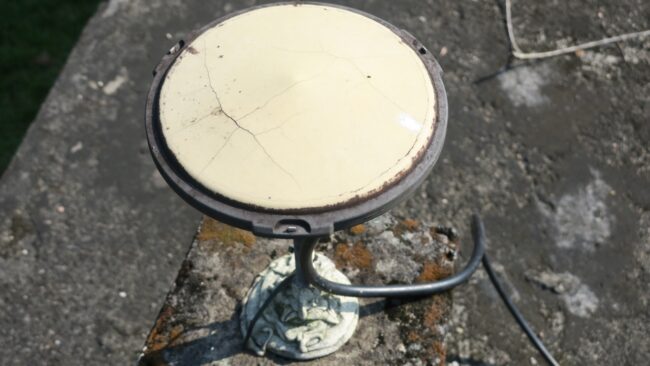 In several of the sites we visited, the heat and rain caused the antenna casing to crack. The inside filled with water, causing it to stop working.
In several of the sites we visited, the heat and rain caused the antenna casing to crack. The inside filled with water, causing it to stop working.Our first station, called JURI, is at a local medical clinic, with the equipment box in the birthing room. Here, the batteries and solar panel charging system were working, but we swapped out the communications modem for repairs back at our hotel. Up on the roof, we found that the antenna had cracked over the years of sun and rain, and it was filled with water. After replacing it with a new one, we had a local tree cutter cut back a couple of trees impeding the sky view of the antenna. This is a perpetual problem at this site that we hadn’t realized when we installed it in 2007. The better the view of the sky, the more accurate the estimate of the antenna position. All this took time, so we finally stopped for lunch at 5pm on the two-hour drive back to our bungalow at the Tea Resort and Museum outside of Sreemangal.
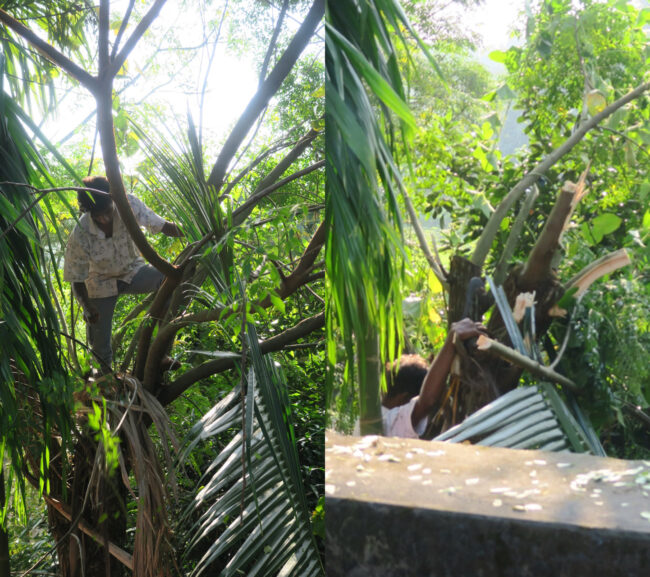 The young woodcutter climbed the tree barefoot and cut off the branches blocking our sky view with a machete. The photo on the left was taken as he started and the one on the right as he climbed down.
The young woodcutter climbed the tree barefoot and cut off the branches blocking our sky view with a machete. The photo on the left was taken as he started and the one on the right as he climbed down.The next three stations, SSPS, DCPS and ICPS, are all at primary schools, with the waterproof equipment box either on the roof or in an office. At the first, there were few students as the Kashi ethnic minority students are Christians and do not attend school on Sunday. The workweek in Bangladesh is Sunday to Thursday as the vast majority of people are Muslims. Since there were so few students, they got a little more of the treats that we brought for the students at each school. Woolace also brought spare soccer balls from his kid’s leagues and we left them for the schools and local soccer league.
 Adam Woolace gifting a soccer ball to the students at Sangai Shapi Primary School.
Adam Woolace gifting a soccer ball to the students at Sangai Shapi Primary School.The last time I visited, the shaky wooden ladder at ICPS broke as I was climbing it. This time, I was prepared. I brought a 12.5 foot telescoping metal ladder that has worked great; it easily reaches the top of the 10 foot buildings while still being small enough to easily fit in the van. At these sites, we again had broken antennas that we replaced, but also issues with the modems and solar power charges. Woolace fixed all these problems, with us looking on and learning for when we have to do it ourselves later in the trip. We are also adding LVDs (low voltage disconnect) to all the sites that don’t have them to help improve the battery life. Only one of the three sites needed tree cutting.
 Zohur Ahmed on the new metal telescoping ladder that I brought with me, a great improvement over the often shaky ladders that we previously used.
Zohur Ahmed on the new metal telescoping ladder that I brought with me, a great improvement over the often shaky ladders that we previously used.Since DCPS is only 15 minutes from our hotel, we were able get to lunch at a reasonable time that day and spend some time back at our bungalow (a borrowed Bangla word) and do some training and practice. We also started programming the next day’s cellular modem in advance so we could quickly swap them instead to redoing them on the hot roof in 90 degree weather.
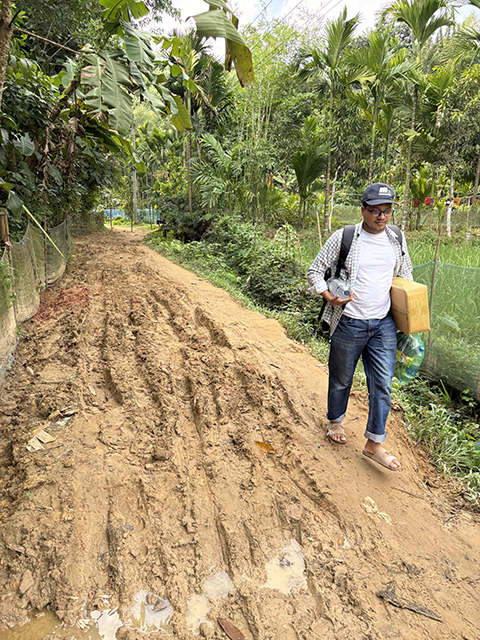 At our first school site, the recent monsoon made the road impossible to drive over, so we had to walk carrying our equipment for the last 200 yards.
At our first school site, the recent monsoon made the road impossible to drive over, so we had to walk carrying our equipment for the last 200 yards.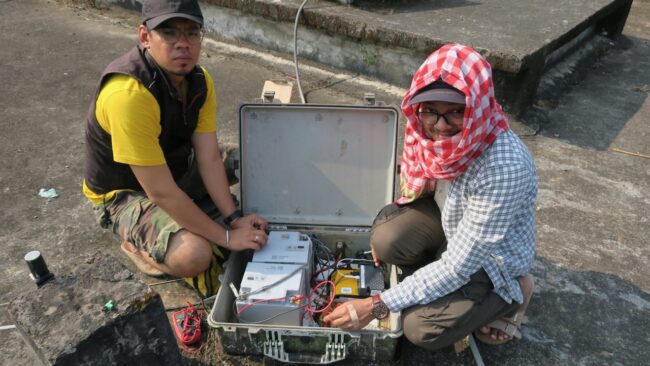 Sanju Singha and Zohur Ahmed on the roof at our DCPS station.
Sanju Singha and Zohur Ahmed on the roof at our DCPS station.The third school site was across the broad valley from the village where Singha grew up. When we finished the work, we drove across to Singha family’s house to meet his parents, uncle and grandmother. We were welcomed with a delicious home-cooked Manipuri meal that included three different kinds of fish. Singha and his family are Bangladeshi Manipuris, an ethnic minority that are Hindu and refrain from eating meat. There are about 25,000 Manipuris in Bangladesh living in the Sylhet region. After dinner, we had a tour of the house and then watched movies of Singha’s wedding from this past May.
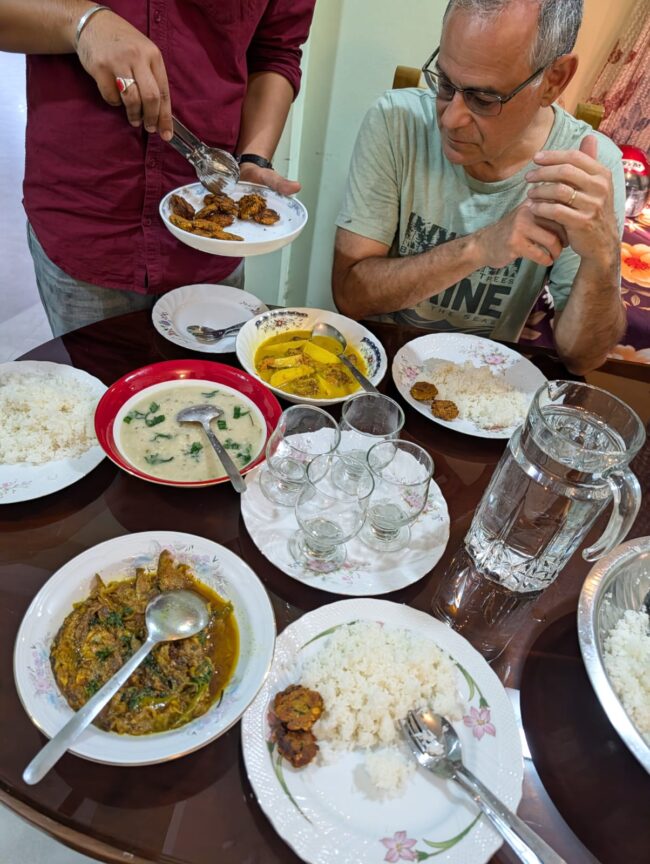 Sanju Singha serving me during dinner at his house with a variety of delicious Manipuri dishes.
Sanju Singha serving me during dinner at his house with a variety of delicious Manipuri dishes.Before we headed to our last station in Sylhet, we had to return to DCPS to change the battery. We were unsure if was OK but tested it. Woolace was able to remotely monitor it and confirmed that it needed replacing. It didn’t take long as DCPS is only 15 minutes from our hotel. Then we continued to Chanurughat (CHNR), an hour to the east. Here the antenna was intact, but we coated it in a layer of silicone to protect it from the weather. We completed the upgrades and repairs and headed back. We got in a little tourism, stopping at the famous “Tea Lady” statue for pictures and trying the Sylhet seven-layer tea at the originator’s shop. As the name implied, layers of different teas (e.g., milk tea, lemon tea, black tea) of different densities are floated over each other.
Our row of five stations spanning over 70 km (45 mi.) of the subduction zone are all now working and sending their data back to the U.S. for our analysis. Tomorrow, we leave Sylhet and head south to Comilla.
Views and opinions expressed here are those of the authors, and do not necessarily reflect the official position of the Columbia Climate School, Earth Institute or Columbia University.






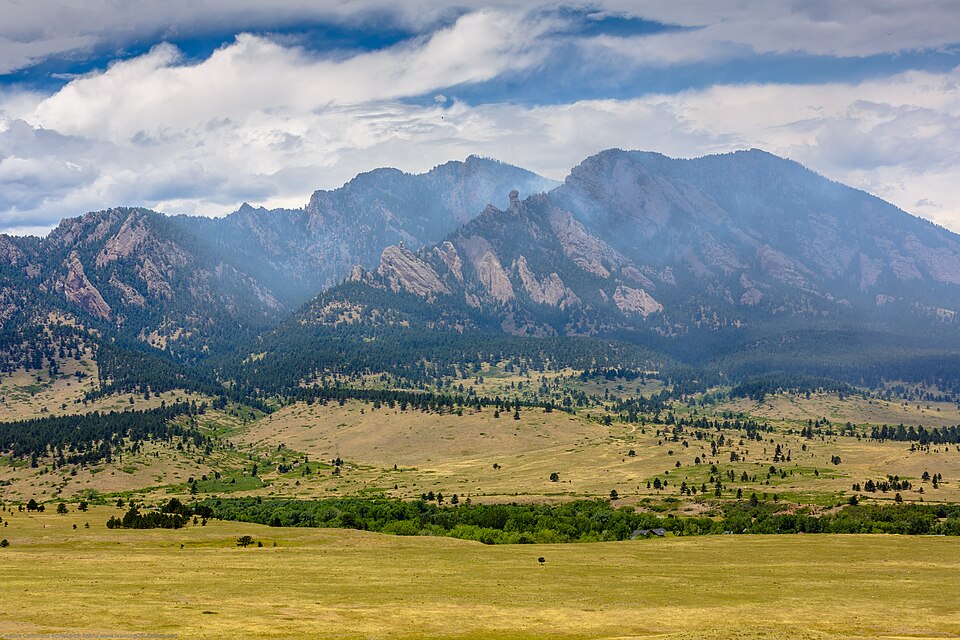
















 English (US) ·
English (US) ·  French (CA) ·
French (CA) ·